Major players across industries like Shopify, Zoom, and Airbnb are quietly leaning on AI tools to supercharge productivity and outpace competitors. Yet, most small and mid-sized businesses are still skeptical, treating AI as a “nice-to-have” instead of a game-changing necessity.
But AI isn't just hype. It's already remodeling workflows, decision-making, and growth strategies at a pace most leaders don't fully realize. McKinsey reports that 78% of companies now deploy AI in at least one business function, and employees using AI tools experience productivity boosts of up to 40%.
Is the AI wave sustainable, or are we heading for another tech bubble? It's impossible to say with certainty. What is clear, though, is that businesses ignoring AI today are at risk of falling behind competitors who embrace it strategically.
This blog will guide you to the top AI tools in 2025 that actually drive business productivity and growth.
Key Takeaways
- AI tools across business functions, calendars, task management, marketing, collaboration, and CRM help teams work smarter and faster.
- AI can automate repetitive tasks, streamline workflows, enhance customer engagement, and provide actionable insights, freeing your team to focus on strategy and growth.
- Selecting the right AI tools for your business ensures that you invest in solutions aligned with your workflows, goals, and long-term productivity objectives.
What Do You Mean by AI Tools for Business?
When we talk about AI tools for business, we’re referring to software and platforms that use artificial intelligence to perform tasks that traditionally required human effort. These tools aren’t just fancy gadgets. They actively analyze data, predict outcomes, automate repetitive tasks, and even make decisions to help businesses operate smarter and faster.
The key point is that AI tools don’t replace people. They amplify human capability. For example, AI-powered analytics can identify trends and insights in minutes that might take humans days to uncover. Similarly, AI-driven workflow tools can automate repetitive tasks, freeing teams to focus on high-impact projects.
What Is AI Used for in Business?
Here are some key ways AI is being used in business:
- AI-Powered Calendar & Scheduling
- Task Management
- Chatbots & Customer Interaction
- Marketing & Design
- Research Assistants
- Automation & Workflow Integration
- Smart Workspace & Collaboration
- Customer Relationship Management (CRM)
AI is helping teams work faster, make better decisions, and focus on what truly matters. Understanding its applications sets the stage for the next step, exploring the Top AI Tools for Business Productivity and Growth.
Top 20 AI Tools for Business Productivity and Growth
Businesses that adopt AI tools strategically are already gaining a massive edge over competitors, streamlining workflows, making smarter decisions, and saving countless hours of manual work. But with hundreds of AI tools on the market, it can be overwhelming to figure out which ones actually deliver results.
So, here’s a list of the top 20 AI tools in 2025 that are proven to boost productivity, optimize operations, and drive growth across different business functions.
AI-Powered Calendar & Scheduling
Managing a calendar efficiently is a challenge for any professional. AI tools like Clockwise and Microsoft 365 Copilot help by intelligently organizing your schedule, minimizing conflicts, and ensuring focus time for high-priority work. They don’t just manage your calendar, they actively optimize it to improve productivity across your team.
1- Clockwise

Clockwise is like having a personal assistant who actually understands your work priorities. It doesn’t just find open slots for meetings; it optimizes your entire week. Need uninterrupted deep work? Clockwise automatically blocks Focus Time so you can get important tasks done without distractions. Got a team with conflicting schedules? It finds the best times for everyone without a single back-and-forth email.
Even better, if someone is out of the office or a meeting gets canceled, Clockwise reshuffles your calendar automatically, keeping your day organized. It also provides real-time analytics and insights, showing you exactly where your time is going so you can reclaim hours lost to unnecessary meetings or busywork.
Other handy features include:
- Focus Time: Protects uninterrupted blocks for deep work or priority tasks.
- Team Scheduling: Coordinates across multiple calendars for seamless collaboration.
- Flexible Meeting Preferences: Lets you set rules for meeting lengths, preferred hours, and buffer times.
- Integration with Google Calendar & Microsoft Outlook: Works right within the tools you already use.
- Notifications & Reminders: Keeps you updated on changes without overwhelming your inbox.
Clockwise takes control of your calendar so your calendar doesn’t control you, making it one of the smartest tools for boosting productivity in any modern workplace.
Try Clockwise’s AI scheduling for free today and take control of your calendar.
2- Microsoft 365 Copilot
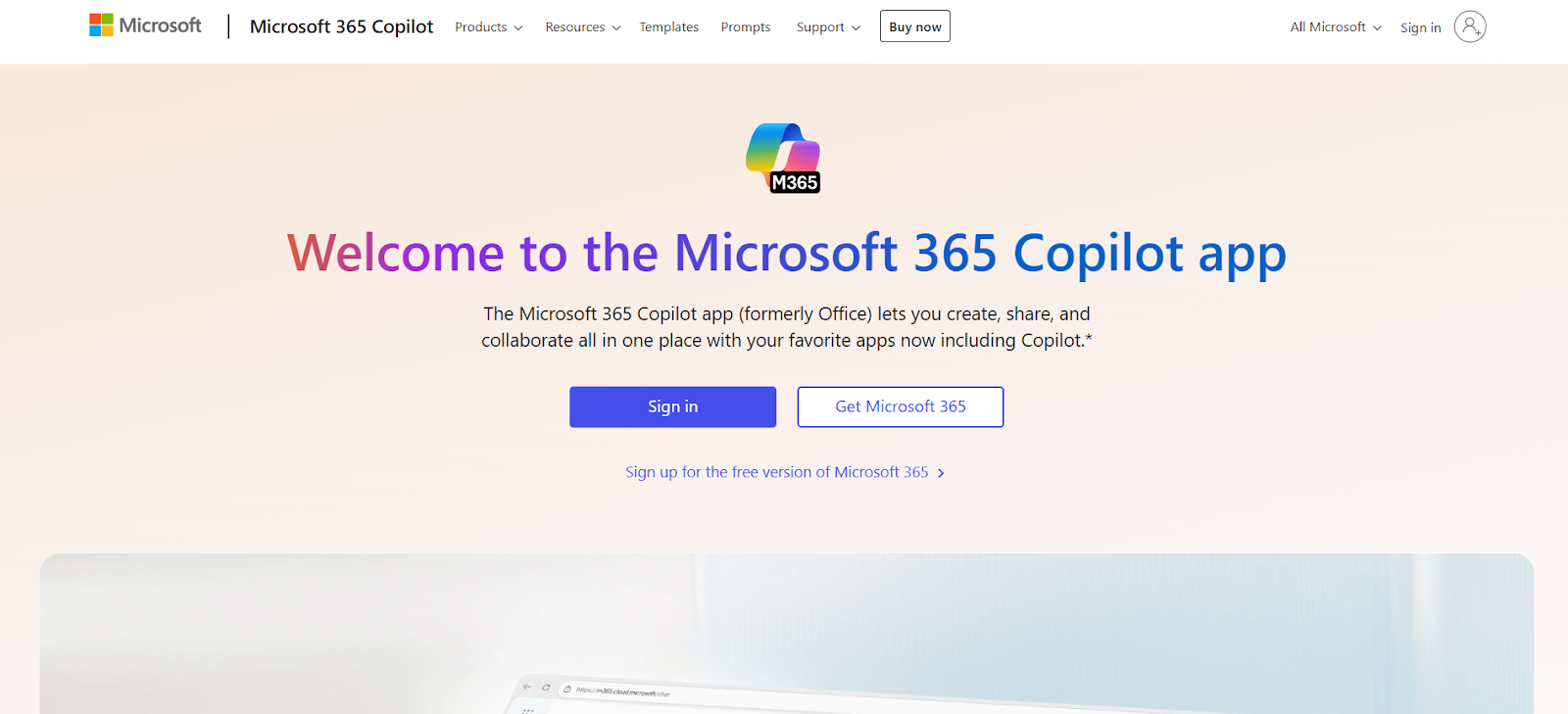
Microsoft has finally delivered on its long-awaited AI assistant, bringing AI directly into the apps millions of professionals already use. Copilot integrates across Outlook, Teams, Word, Excel, PowerPoint, and OneNote, acting as a productivity partner that reduces manual effort and accelerates everyday tasks. It can draft and refine emails, summarize lengthy documents, generate meeting notes with action items, and even suggest the best time for urgent syncs.
In Excel, Copilot goes beyond formulas by analyzing datasets, spotting trends, and producing visuals in seconds. In PowerPoint, it can transform text prompts into polished slide decks complete with design suggestions. Inside Teams, it captures discussions, creates summaries, and ensures no task slips through the cracks by nudging you with reminders. For knowledge workers juggling multiple tools and deadlines, it keeps workflows connected and projects on track.
As for pricing, Microsoft 365 Copilot is offered at $30 per user, per month (on top of existing Microsoft 365 subscription costs). While not the cheapest option, it’s positioned as a powerful upgrade for businesses already embedded in Microsoft’s ecosystem, delivering real ROI through time saved, fewer errors, and better collaboration.
Also Read: Top 10 Online Scheduling Tools for Team Meetings in 2025
Task Management
Managing projects is more than just checking boxes, it’s about prioritizing the right tasks, staying aligned as a team, and making sure deadlines don’t slip. AI-powered task management tools take the guesswork out of planning and execution.
3- Asana

Asana features make project tracking smarter by analyzing workloads, deadlines, and dependencies. Instead of just logging tasks, it helps you understand what matters most.
Key Features
- AI-driven task prioritization so teams focus on the highest-impact work.
- Automatic timeline and workflow generation for complex projects.
- Predictive alerts to flag bottlenecks before they disrupt progress.
- Quick project summaries that let you catch up without digging through threads.
Where it falls short: Teams not already invested in Asana’s ecosystem may find the AI features less compelling, as they work best when all tasks live inside the platform.
4- ClickUp AI

ClickUp takes a more all-in-one approach. Its AI doesn’t just manage tasks; it supports writing, planning, and collaboration in one hub. This flexibility makes it a favorite for startups and fast-moving teams.
It can:
- Draft task descriptions, project briefs, and even meeting notes.
- Assist in sprint planning by automating recurring updates.
- Identify overlapping tasks or duplicated work across projects.
- Suggest workflow optimizations to keep teams aligned.
ClickUp AI blurs the line between task management and team collaboration. It’s like having an operations manager built into your workspace.
Chatbots & Customer Interaction
Customer expectations have changed. Long wait times and generic responses don’t cut it anymore. AI chatbots and voice systems are stepping in to deliver faster, smarter, and more personalized experiences.
5- Ask JADA

Ask JADA handles high-volume, voice-first customer interactions through an AI-driven phone system designed for industries where calls still dominate. It uses natural language processing to answer routine queries, collect information, and escalate complex issues to live agents, while built-in analytics surface trends like call volume, common complaints, and sentiment shifts.
Where Ask JADA stands out is fraud detection and risk signals: the system flags suspicious patterns during calls and feeds that data into reporting dashboards so teams can act quickly. Implementation typically involves telephony integration and compliance checks, which makes Ask JADA a strong fit for finance, insurance, and healthcare operations that need reliable voice automation tied to robust analytics.
6- Drift AI
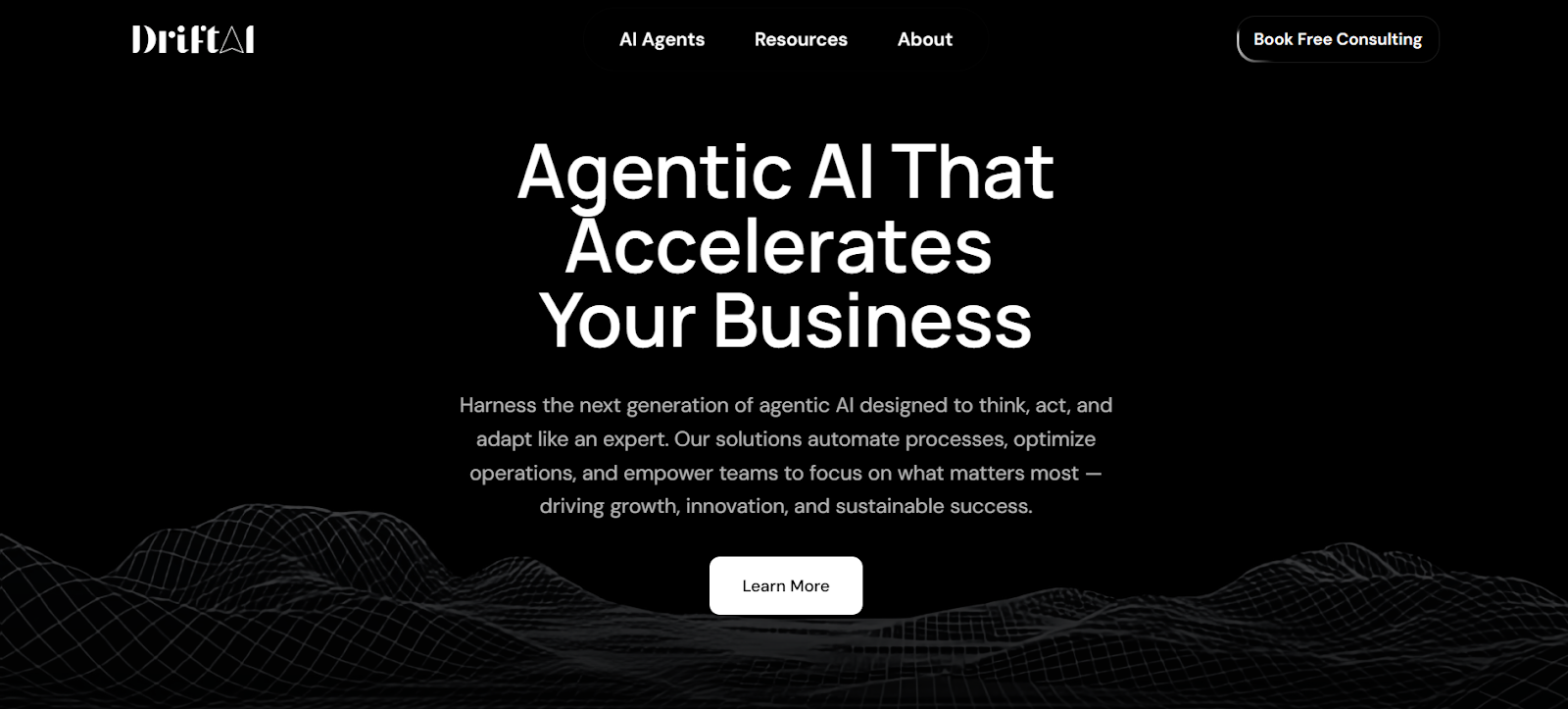
Drift AI focuses on digital-first customer engagement, especially for sales-driven teams. It replaces static forms and slow email chains with real-time, conversational interactions that qualify leads, answer questions, and even book meetings.
Drift’s biggest strength is personalization: it remembers past conversations and tailors responses to individual prospects, making interactions feel less robotic. With integrations into CRMs like Salesforce and HubSpot, Drift AI doesn’t just handle customer queries; it actively fuels the sales pipeline, turning conversations into conversions.
The trade-off is that Drift needs deliberate setup and ongoing tuning; without tailored playbooks and regular optimization, conversations can feel generic and lead qualification accuracy.
For teams focused on digital lead generation and pipeline acceleration, Drift is usually the better fit; for voice-centric customer service at scale, Ask JADA is worth evaluating.
Marketing & Design
Marketing teams juggle endless creative demands- from writing copy to designing visuals and AI tools are stepping in to ease the load while keeping creativity intact.
7- Jasper AI
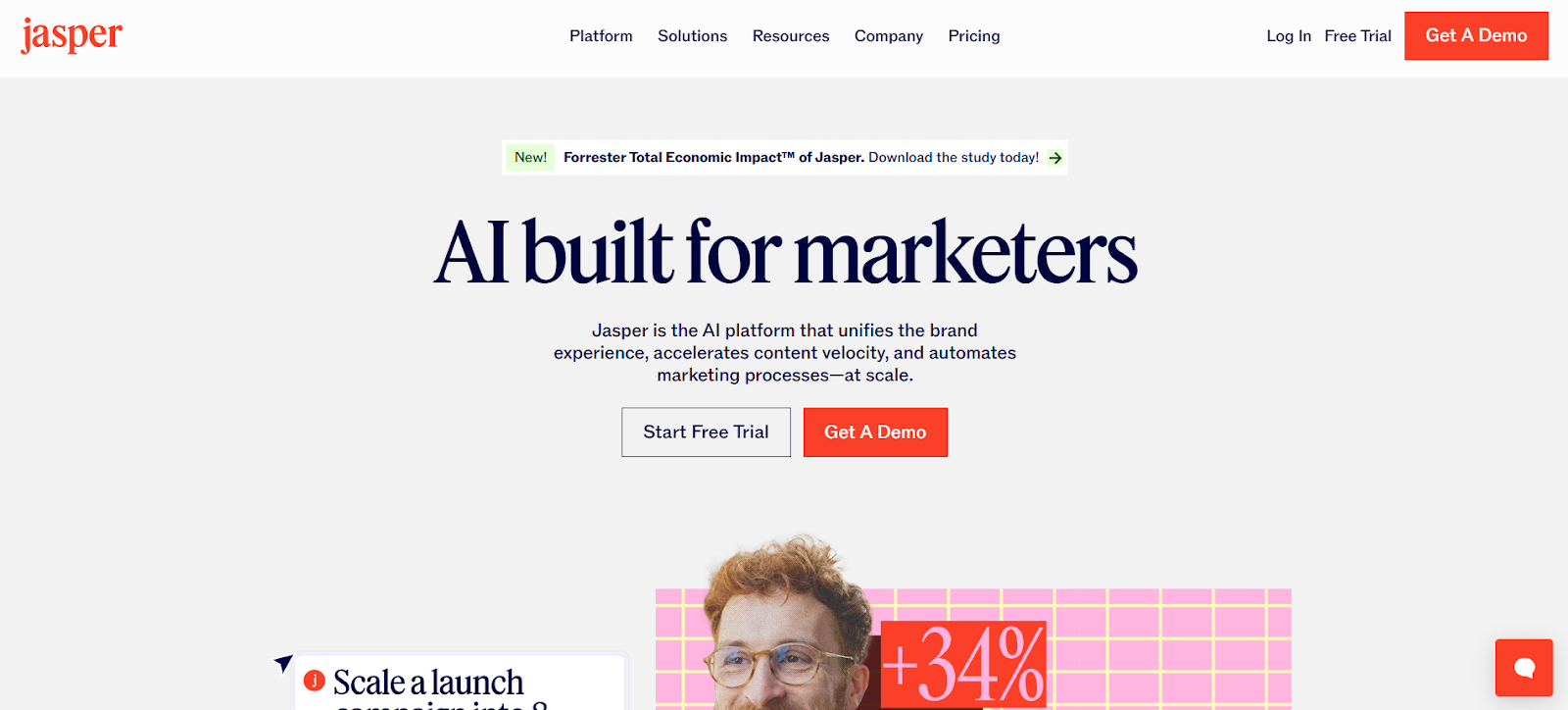
Jasper is one of the most popular AI writing platforms tailored for marketers. Unlike generic AI text generators, it focuses on producing brand-aligned content at scale.
- Brand Voice – Trains on your company’s style guide and past content to keep tone consistent.
- Content Variety – Creates blog posts, ad copy, social captions, and email campaigns.
- Campaign Support – Offers pre-built workflows for SEO, product launches, and social promotions.
- Collaboration – Teams can co-create in one workspace with version history and permissions.
It is best suited for marketing teams who need high-volume, on-brand copy across multiple channels.
8- Canva AI
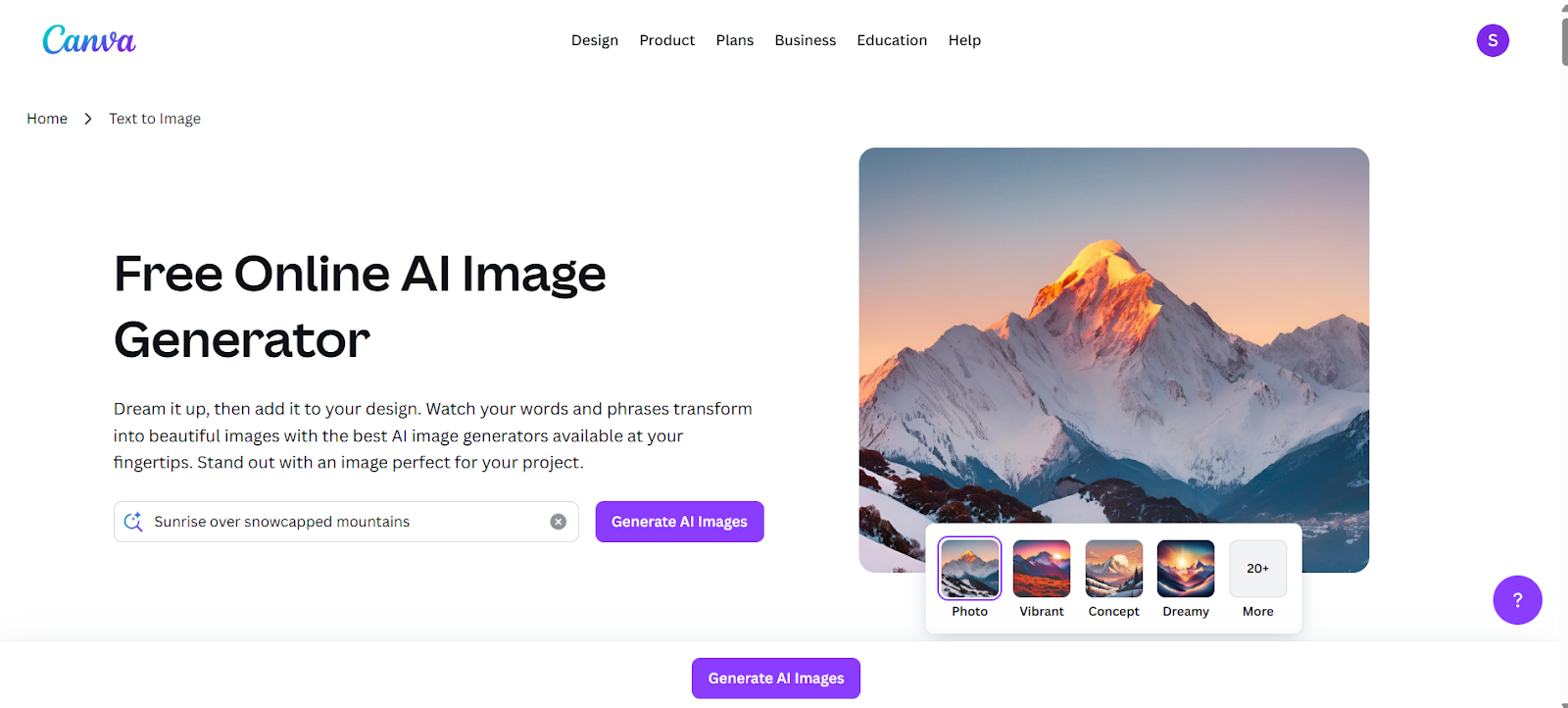
Canva has long been the go-to design tool for non-designers, and with AI features, it has become even more powerful for marketing teams. Magic Design suggests layouts automatically based on the type of content you’re creating whether it’s a LinkedIn post, presentation, or infographic.
Magic Write helps generate copy inside your designs, reducing the need to switch between tools. Canva’s AI-powered image generator allows you to create custom visuals from text prompts, while its brand kit ensures every design matches your company’s fonts, colors, and logos. For small and mid-sized businesses without full-time designers, Canva AI makes professional-quality marketing material fast, scalable, and visually consistent across all platforms.
9- Adobe Firefly

Adobe Firefly is Adobe’s big leap into generative AI, designed to bring speed and creativity together inside the tools professionals already use. Since it’s integrated into Creative Cloud, you don’t have to jump between platforms because AI works seamlessly in Photoshop, Illustrator, and Premiere.
Some highlights that make Firefly stand out:
- Generative Fill: Instantly replace, remove, or extend parts of an image with realistic AI edits.
- Text-to-Image Creation: Generate high-quality visuals from simple text prompts.
- Text Effects: Apply textures like metallic, neon, or gradients directly to typography.
- Video Enhancements: AI-driven tools for color correction, scene adjustments, and future-ready editing in Premiere Pro.
- Commercial Safety: Unlike many AI generators, Firefly is trained on licensed or Adobe Stock data, making its outputs safer for business use.
Another strength is its collaborative approach. Teams can quickly produce draft visuals with Firefly, then refine them using Adobe’s professional-grade tools, keeping both speed and polish intact.
On pricing, Firefly comes with a free plan (limited credits), while Creative Cloud subscribers get monthly credits included. For power users, extra credits can be purchased on top, giving flexibility whether you’re an occasional marketer or a design-heavy team.
Research Assistants
If you’ve ever spent hours skimming reports, digging through articles, or piecing together information from scattered sources, you know how draining research can be. AI research assistants are changing that. Instead of wasting time on manual searches, these tools handle the heavy lifting: summarizing, organizing, fact-checking, and even presenting insights in formats that are easy to understand and use. Here are four standout tools redefining how research gets done:
10- Humata
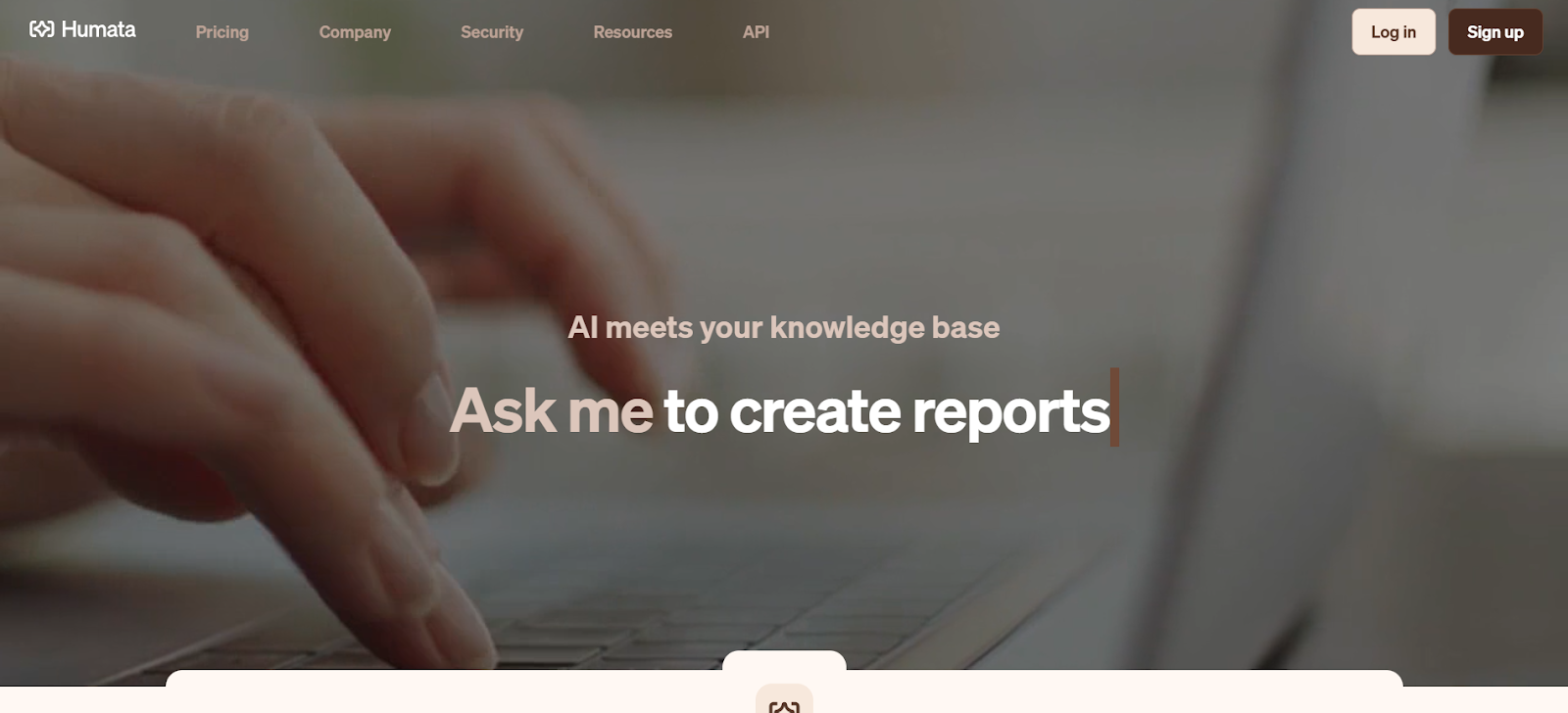
Humata specializes in document intelligence. Instead of manually reading long PDFs, technical manuals, or research papers, you simply upload them, and Humata turns them into a responsive, searchable knowledge base. You can ask it specific questions and get answers drawn directly from your document.
- Upload contracts, compliance reports, academic papers, or training manuals.
- Extracts insights and highlights the most relevant passages so you don’t miss important details.
- Breaks down complex or technical writing into simple explanations.
- Supports collaborative workflows by allowing teams to upload shared documents and query them together.
- Paid tiers unlock higher upload limits, faster response times, and deeper semantic search across large document sets.
Legal teams use Humata to quickly understand clauses in lengthy agreements. Researchers save time by extracting findings from 100-page studies in minutes. Even HR departments can summarize policies or onboarding materials for easier employee communication.
11- Arc Browser
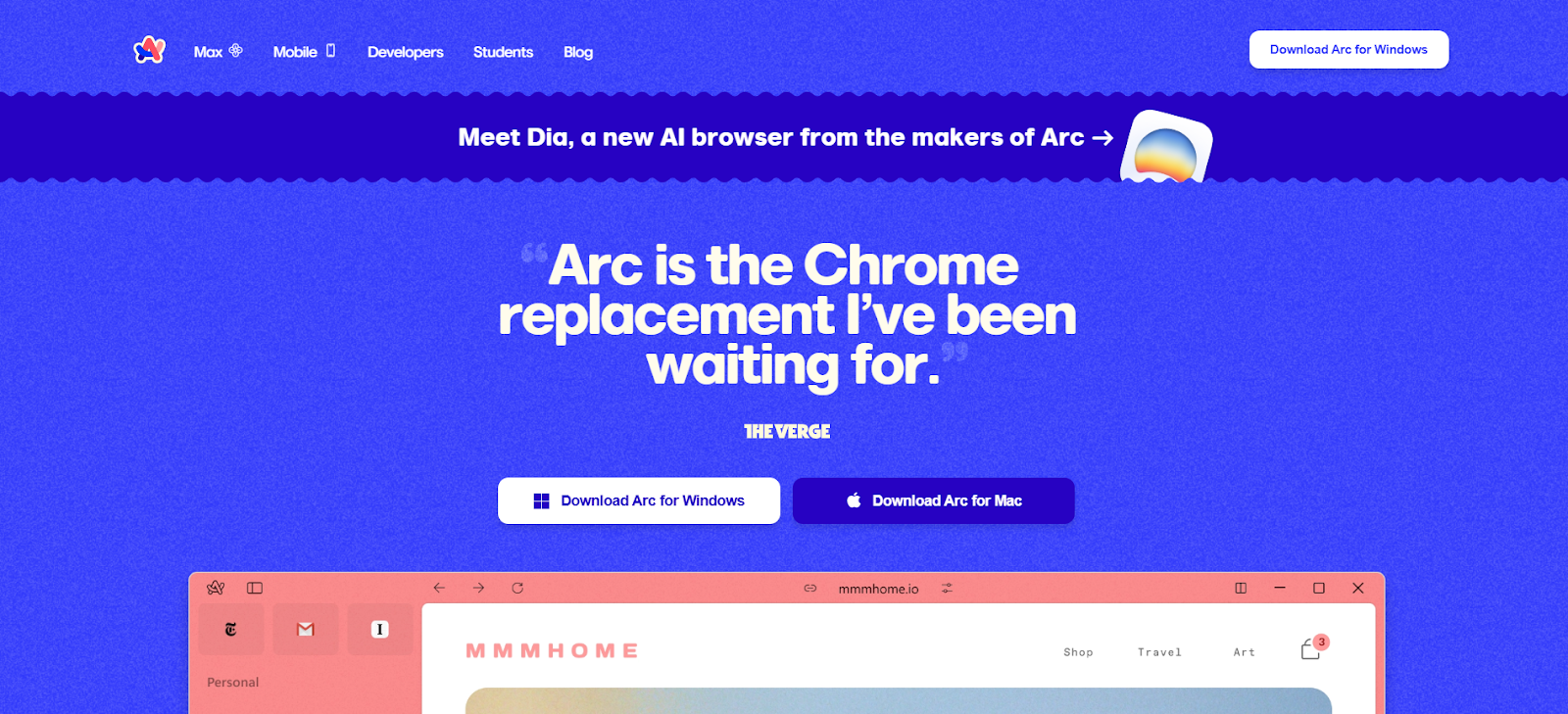
Arc is a workspace built for modern professionals. Beyond offering a sleek, distraction-free browsing experience, Arc integrates AI features that make research more structured and collaborative.
- Smart summarizer condenses long-form articles or research notes into key points.
- Tab management groups your resources by project, so you never lose track of what you’re working on.
- The "Spaces" feature allows you to create different work environments (for example, one space for client research and another for internal projects).
- Built-in collaboration lets teams share collections of research material without relying on external apps.
- Quick commands and AI-powered search make navigation faster, saving you from digging through endless tabs.
Instead of juggling a chaotic mix of 50 open tabs across Chrome or Safari, Arc gives structure to your workflow. It’s particularly helpful for researchers, writers, and startups working on multiple projects at once.
12- Recast
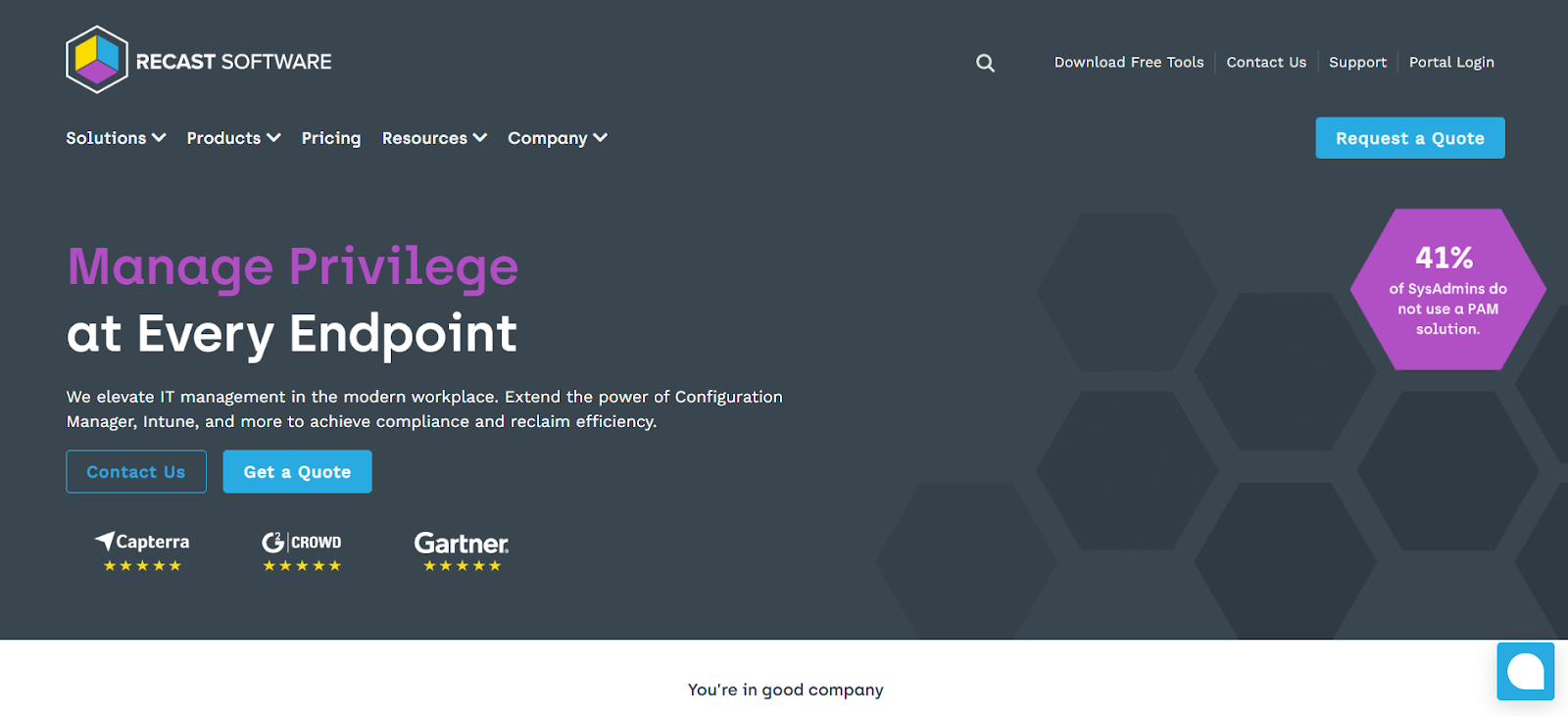
Recast focuses on helping professionals absorb information without spending hours reading. It converts blogs, reports, and news into concise summaries or even podcast-style audio clips. Instead of skimming pages, you can listen to or read key insights in minutes.
Recast also integrates with Chrome so that you can summarize content directly from any webpage. It’s especially useful for marketers, executives, and entrepreneurs who need to stay updated on trends or research quickly without information overload. By turning dense content into digestible summaries, Recast ensures you never miss critical insights while saving time.
13- Perplexity
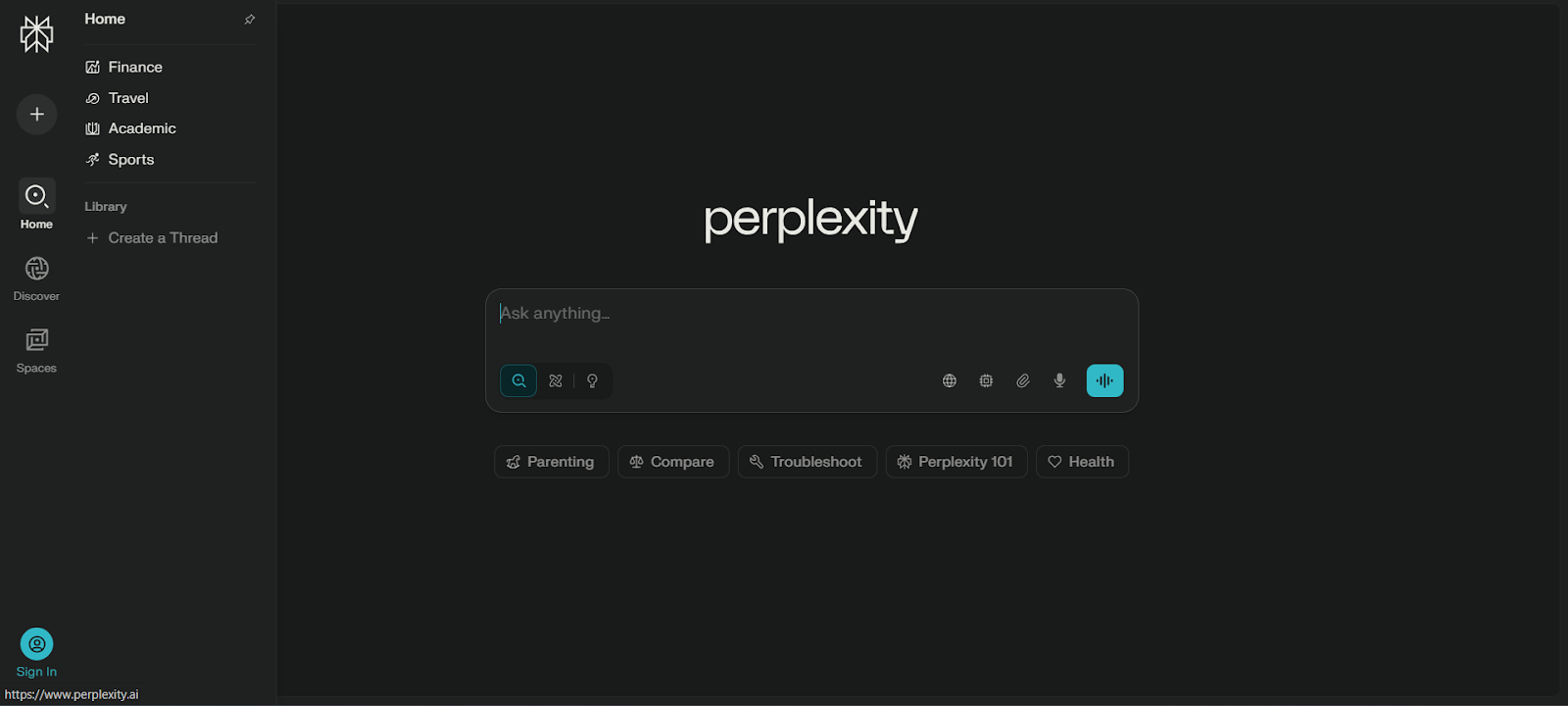
Perplexity is like Google with a PhD. It doesn’t just give you a list of links but provides direct, well-sourced answers. Every response includes citations so you can verify the information and dig deeper if needed.
- Answers are concise, fact-based, and include clickable references.
- Handles both quick queries ("What is the churn rate in SaaS?") and in-depth research ("Compare renewable energy policies in India, the US, and Germany").
- Provides related questions to help you explore a topic more comprehensively.
- The free version works well for everyday questions. The Pro plan (around $20/month) gives you access to premium models like GPT-4 and Claude for deeper insights.
- Its mobile app is particularly popular among students and analysts who want accurate, trusted information on the go.
Writers use Perplexity for quick fact-checking. Analysts rely on it to compare market data with credible sources. Students love it for academic research since it points them directly to relevant references. Unlike traditional search, it cuts through noise and bias by grounding answers in sources.
Automation & Workflow Integration
Managing repetitive tasks, cross-app communication, and manual workflows is one of the biggest drains on business productivity. AI-powered automation tools simplify this by connecting apps, services, and devices, reducing human error, and giving teams more time for high-impact work.
14- Zapier

Zapier is one of the most widely adopted automation platforms for businesses because it transforms the way teams work across apps. Instead of manually transferring data, sending repetitive emails, or updating multiple tools, Zapier automates these processes so your team can focus on meaningful work. Its simplicity and flexibility make it accessible for both non-technical users and seasoned professionals, while its scalability allows businesses of all sizes to streamline workflows. Here are some key features of Zapier:
- Workflow Automation (Zaps): Connect hundreds of apps and automate sequences between them.
- Triggers & Actions: Define conditions and actions to automate repetitive tasks, like sending notifications or updating records.
- Multi-Step Workflows: Build complex processes involving multiple apps and conditional logic.
- App Integrations: Supports thousands of apps, including Slack, Gmail, Trello, Salesforce, Shopify, and more.
- Customizable & Scalable: Suitable for startups, SMBs, and enterprise-level organizations.
- Error Handling & Monitoring: Alerts you to failed Zaps and allows easy troubleshooting.
- Time-Saving Templates: Pre-built Zaps make setup faster and more efficient.
Zapier eliminates manual, repetitive work and reduces human error, saving teams hours every week. By connecting multiple apps into automated workflows, businesses can operate faster, respond to leads more quickly, and improve team productivity without adding headcount.
15- Make (formerly Integromat)
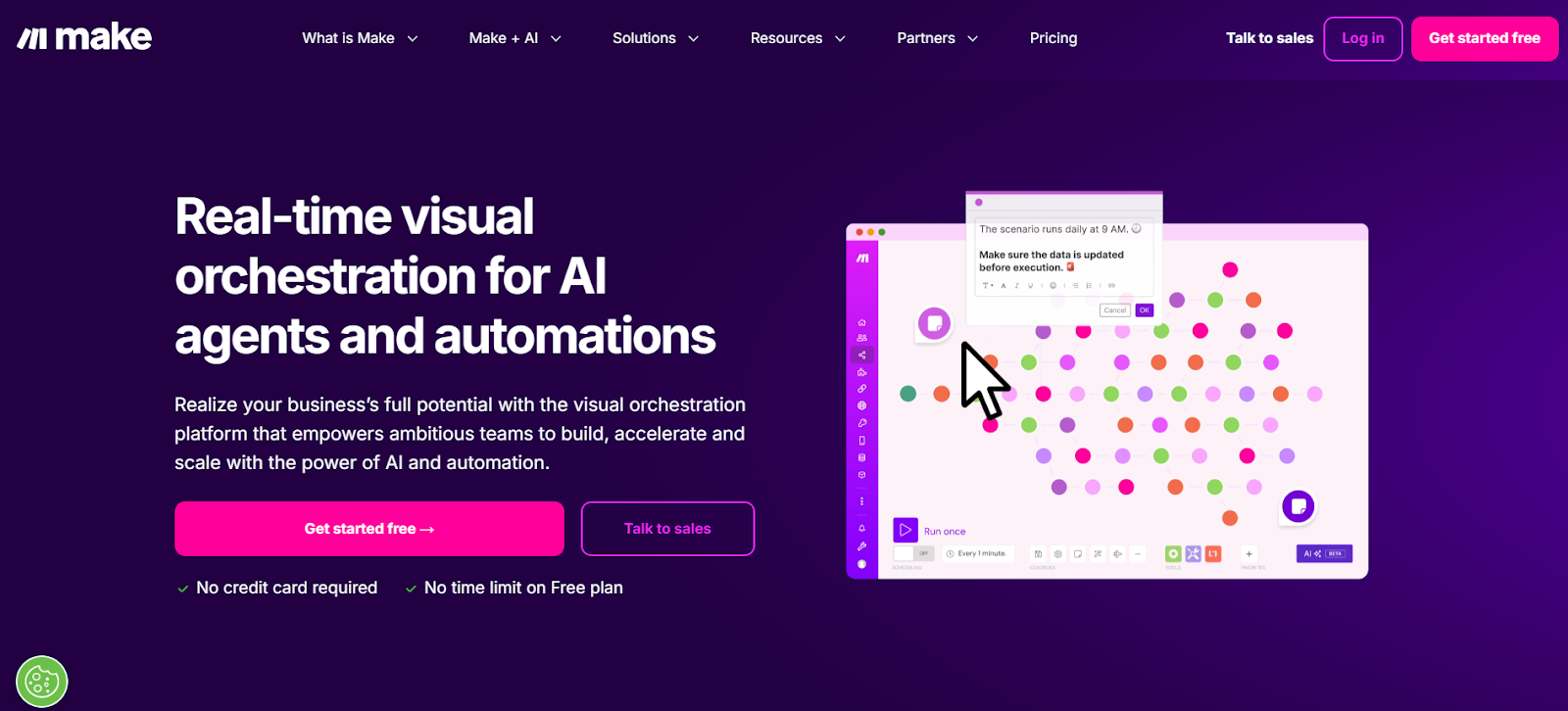
Make is a visual automation platform designed for teams that need more control over complex workflows. Unlike simpler automation tools, Make lets you map out entire processes visually, so you can see exactly how information flows between apps. This is especially helpful for businesses that rely on multiple systems and want to avoid manual data transfers or errors. By using conditional logic, loops, and filters, teams can build workflows that handle even the most intricate business processes without coding.
For example, an e-commerce business can automate order processing across its online store, inventory management system, and CRM. A marketing team could set up a workflow to automatically gather leads from multiple sources, tag them based on campaign performance, and route them to the right salesperson. Make’s flexibility and real-time data transfer ensure teams spend less time on repetitive work and more time on strategic tasks.
16- IFTTT (If This Then That)

IFTTT focuses on simplicity and accessibility, enabling users to automate everyday tasks across apps, devices, and services. Instead of building complex workflows, you create “applets” that trigger an action when a condition is met. This approach is perfect for teams and individuals who want quick, practical automation without investing in heavy configuration or technical setup. IFTTT supports thousands of apps and integrates with smart devices, making it versatile for both personal productivity and business use.
For instance, marketing teams can automatically post content to social media when a blog is published, or sales teams can save email attachments to cloud storage automatically. IFTTT can also streamline office operations, such as sending notifications when a key metric changes in a dashboard or syncing tasks across apps. Its pre-built applets and intuitive interface make it accessible for anyone, from small business owners to enterprise teams, helping them save time and reduce repetitive work.
Smart Workspace & Collaboration
Collaboration used to mean endless email threads, scattered documents, and missed updates. AI is changing that by transforming how teams organize, communicate, and complete work efficiently. Tools like Notion AI and Slack AI are no longer just software, they act as intelligent assistants embedded into your workflow.
17- Notion AI

Notion AI turns the traditional workspace into a dynamic hub for productivity. Drafting a project plan can now take minutes instead of hours, with AI summarizing research, suggesting next steps, and structuring meeting notes automatically. Teams can collaborate in real time, track tasks, and maintain a single source of truth for all project information. The AI anticipates needs, whether it is generating a content outline, prioritizing tasks, or condensing long documents, allowing teams to focus on strategic decisions rather than chasing updates.
18- Slack AI
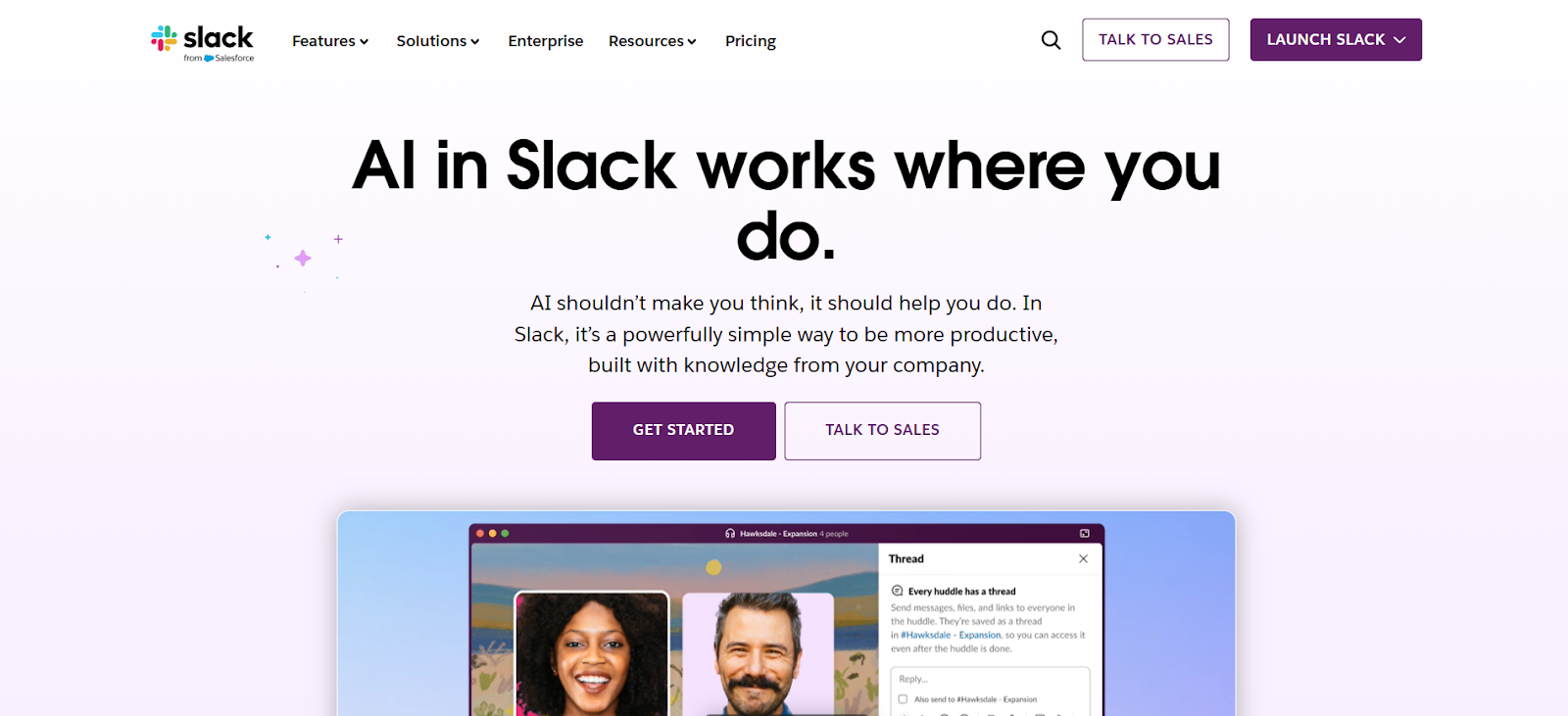
Slack AI brings intelligence directly into conversations. Important messages no longer get lost in long threads. Slack AI summarizes discussions, suggests context-aware responses, and integrates with other AI tools to keep workflows moving smoothly. Daily chats are transformed into actionable insights, making communication faster and more efficient. For remote and hybrid teams, this ensures alignment without the need for constant meetings or status updates. Here are some of its key features:
- Conversation Summaries: Converts lengthy chat threads into key takeaways and action items.
- Automated Responses: Suggests or drafts replies to common questions, reducing response time.
- Integration with AI Tools: Works with other AI applications for scheduling, task management, and data retrieval.
- Knowledge Capture: Highlights important messages and organizes them for easy reference.
Customer Relationship Management (CRM)
Managing customer relationships is at the heart of any successful business. AI-powered CRM tools like HubSpot AI and Salesforce Einstein are taking traditional customer management to the next level by providing actionable insights, predicting outcomes, and personalizing engagement at scale. These tools help sales, marketing, and support teams anticipate customer needs, automate repetitive tasks, and build stronger, more profitable relationships.
19- HubSpot AI

HubSpot AI integrates deeply with the HubSpot CRM platform, giving teams predictive analytics, automated workflows, and intelligent recommendations. The AI analyzes historical customer data to identify patterns in behavior, helping teams forecast deal success, segment leads effectively, and prioritize high-value prospects.
Key features:
- Predictive Lead Scoring: Identify high-potential leads and focus efforts where they matter most.
- Personalized Engagement: Generate tailored emails and outreach suggestions automatically.
- Automated Follow-Ups: Maintain consistent engagement without manual effort.
- Marketing Optimization: Analyze campaigns, track performance, and suggest improvements.
- Data-Driven Decision Making: Transform raw customer data into actionable insights.
Why it’s valuable: Marketing and sales teams can make smarter, faster decisions without needing a dedicated analytics team, while maintaining strong, personalized customer interactions.
20- Salesforce Einstein
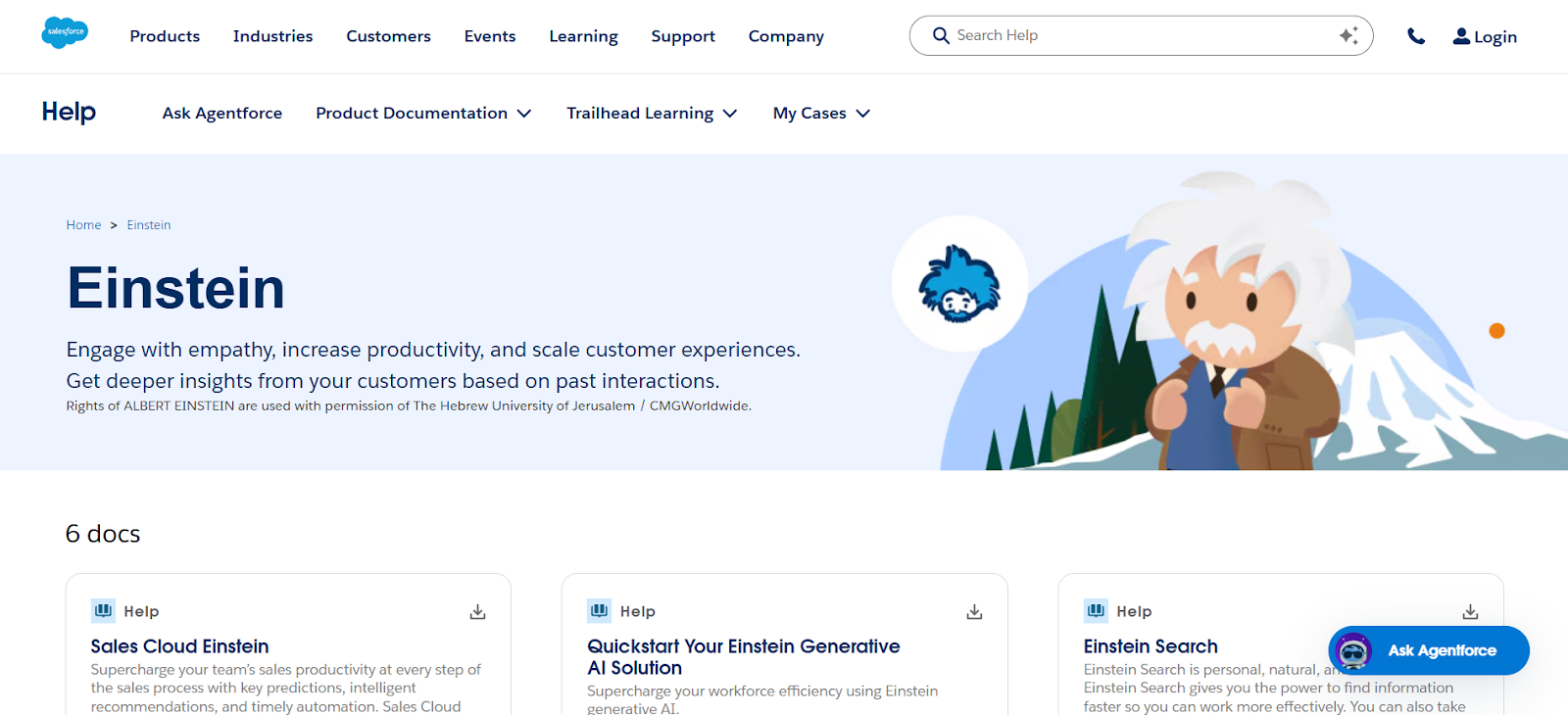
Salesforce Einstein embeds AI directly into the Salesforce ecosystem, providing advanced insights, predictive forecasting, and actionable recommendations for customer management. It analyzes large datasets to identify trends, predict churn, and suggest cross-sell or upsell opportunities.
Key features:
- Predictive Insights: Forecast deals, customer behavior, and potential churn.
- Actionable Recommendations: Suggest the best next steps for sales and support teams.
- AI-Powered Marketing: Segment audiences and personalize campaigns effectively.
- Service Automation: Prioritize tickets and provide AI-recommended responses.
- Enterprise Integration: Works across Salesforce products to centralize intelligence.
Why it’s valuable: Einstein turns raw data into meaningful action, helping teams close deals faster, retain customers longer, and deliver exceptional service.
After exploring these top AI tools, it’s clear that technology can do more than just automate tasks. It can redefine how your team works, communicates, and grows. Each tool brings unique capabilities, whether it’s optimizing schedules, streamlining workflows, enhancing collaboration, or driving smarter customer engagement.
With so many options available, the challenge now is choosing the tools that best fit your team’s specific needs and goals. The next section will guide you through the key factors to consider when selecting AI solutions, ensuring your investments deliver maximum productivity and growth.
Also Read: A Guide to Automated Scheduling- Benefits, Types, and Implementation
How to Choose the Right AI Tools for Your Business

Choosing the right AI tools can be overwhelming given the wide range of options available today. The key is to focus on your business needs, team workflows, and long-term goals to select solutions that truly enhance productivity and growth.
- Identify Your Pain Points: Pinpoint the workflows or tasks that consume the most time or create bottlenecks. Focus on areas where AI can provide real efficiency gains, such as scheduling, task management, customer engagement, or content creation.
- Evaluate Features and Integrations: Choose tools that seamlessly integrate with your existing tech stack. Look for automation capabilities, predictive analytics, collaboration support, and content generation features that align with your business needs.
- Consider Scalability and Ease of Use: Select tools that can grow with your business. Startups may prioritize simplicity and affordability, while larger teams may need advanced analytics, multi-user management, and enterprise-level security. An intuitive interface ensures faster adoption and higher productivity.
- Review Pricing and ROI: Compare pricing plans based on features, usage limits, and team size. Ensure the tool delivers measurable value and fits within your budget without hidden costs.
- Check Support and Community Resources: Look for responsive customer support, tutorials, and active user communities. Strong support ensures quick troubleshooting and helps your team maximize the tool’s potential.
- Test Before Committing: Whenever possible, use free trials or demo versions to see how the tool works in your real workflows. Practical testing helps confirm whether the AI tool truly fits your business needs.
Choosing the right AI tools is about finding solutions that genuinely fit your team’s workflows and goals. By carefully assessing your needs, evaluating features, considering scalability, and testing tools before committing, you can ensure that your AI investments deliver real productivity gains and tangible business growth.
Also Read: AI Task Managers and Scheduling Tools for 2025
Wrapping Up
AI tools are becoming essential for businesses that want to stay competitive, efficient, and innovative. From smart scheduling and task management to marketing automation and CRM insights, these tools help teams focus on high-value work, reduce repetitive tasks, and make data-driven decisions.
The key to success lies not just in adopting AI, but in choosing the right tools that align with your team’s workflows, goals, and growth plans. When implemented thoughtfully, AI can amplify human potential, streamline operations, and open new opportunities for business expansion.
FAQs
1. What are AI tools for business?
AI tools are software applications that use artificial intelligence to automate tasks, analyze data, generate insights, and enhance decision-making. They help businesses improve productivity, streamline workflows, and optimize operations across functions like marketing, sales, HR, and customer support.
2. How can AI tools improve productivity?
AI tools reduce repetitive, time-consuming tasks, provide actionable insights, and enhance collaboration. By automating scheduling, content creation, and data analysis, teams can focus on strategic work, make faster decisions, and achieve more in less time.
3. Are AI tools expensive for small businesses?
Many AI tools offer scalable pricing plans, including free or affordable entry-level options suitable for startups and small businesses. Costs generally increase with advanced features, team size, or enterprise-level integrations. It’s important to assess ROI before investing.
4. Can AI tools replace human employees?
No, AI tools are designed to complement human work, not replace it. They handle repetitive or data-intensive tasks, allowing employees to focus on creativity, strategy, and complex problem-solving that AI cannot perform.
5. How do I choose the right AI tool for my business?
Focus on your specific business needs, workflows, and team goals. Evaluate features, integrations, ease of use, scalability, pricing, and customer support. Testing tools through free trials or demos can help determine which solution fits best.
6. Are AI tools secure for business use?
Most reputable AI tools follow strict security protocols and data privacy standards. However, it’s essential to review the vendor’s security policies, compliance certifications, and access controls to ensure sensitive business and customer data is protected.


.gif)
.png)



